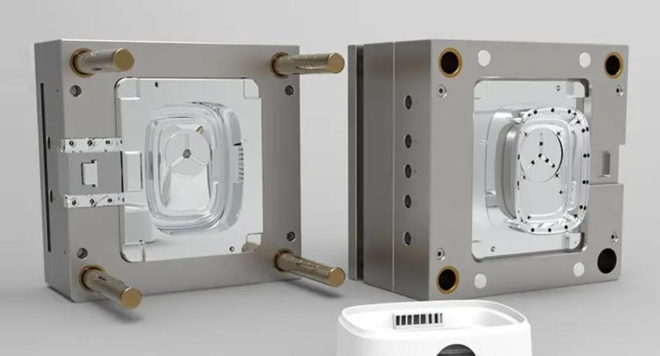3D printing, also known as additive manufacturing, helps these companies make better injection molding molds and tooling faster and cheaper than traditional processes. 3D printing requires fewer steps than machining, with an average of only six working days required to complete the mold and part. The mold manufacturing can even be completed in as little as a few hours, which is fast.

3D printing plastic mold
Combining strong and temperature-resistant materials with a plastic (or polymer) 3D printer allows companies to make their own injection molds in-house or quickly order them from a service provider. 3D printed plastic molds can be used for small quantities of parts (100 or 10,000, depending on the material) and cost 90% less than metal molds. If the budget is limited and the lead time is short, then plastic 3D printing is the preferred mold manufacturing method. It is also widely used for prototyping, which allows companies to test and iterate more quickly before moving to traditional tools for mass production with greater confidence.
While there are many types of plastics used in 3D printing, not all materials can withstand the pressure and temperatures of an injection molding machine. Material selection depends on the melting temperature of the plastic being molded, the pressure of the injection molding machine, and the number of parts being produced. The most commonly used materials include PETG, polypropylene (PP), mold resin, nylon (PA), carbon fiber nylon, etc., but they usually can only withstand tens to hundreds of injection molding cycles. For thousands of parts, In production, metal is chosen over plastic most of the time.
3D printing metal mold
The drivers behind the surge in the use of metal 3D printed molds are entirely different from the advantages of plastic 3D printed molds. In fact, in some cases, metal 3D printed molds can be more expensive and take longer to make than traditional metal molds. It is not that the production of molds is more advantageous, but that it is more economical to produce the entire product using 3D printed molds. Since metal 3D printed parts often require additional processing, there are an increasing number of hybrid machines on the market that integrate a 3D printer and CNC machine into a single machine.
In short, compared with traditional processing molds, the advantages of 3D printing molds are speed, cost and material savings, while the design is more flexible. Taking metal 3D printing molds as an example, perhaps only medium and large enterprises would use them in the past, but now small and medium mold factories are also using them. It is only a matter of time before the technology becomes popular.

